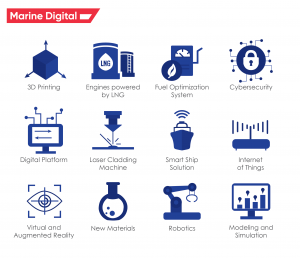Shipbuilding is the process of designing, constructing, and launching ships for various purposes such as commercial, military, or personal use. Shipbuilding involves a range of disciplines, including naval architecture, marine engineering, electrical and mechanical engineering, and welding and fabrication.
The shipbuilding process typically involves several stages, including design, construction, testing, and launching. In the design phase, naval architects and marine engineers work together to create a blueprint of the ship that meets the specific requirements and specifications of the client. Once the design is finalized, the ship is constructed using materials such as steel, aluminum, or composite materials. During construction, various systems such as propulsion, electrical, and communication systems are installed. Once construction is complete, the ship undergoes extensive testing to ensure it meets safety and quality standards. Testing includes sea trials, where the ship is taken out to sea to test its performance and stability, and other tests to check various systems and components. Shipbuilding is a highly specialized and complex industry, requiring skilled professionals and advanced technology. The industry has evolved over time with the introduction of new materials, advanced manufacturing techniques, and the use of computer-aided design and simulation tools. Shipbuilding has a significant impact on the global economy, with many countries having a thriving shipbuilding industry. The industry provides jobs for a range of professionals, from engineers and technicians to welders and fabricators. The ships built through shipbuilding play a critical role in international trade, transportation, and defense.
Modern technologies are essential for steady and sustained development in any industry. The shipbuilding industry has been applying modern technologies at an increasing pace and is catching up with other industries like automotive and aviation. In this article, we highlight some of the revolutionary technologies that could transform the shipbuilding industry in the next 5-7 years.

Source: Marine Digital
The first technology is 3D printing, which allows the creation of real objects from virtual 3D models. This technology is actively used in various sectors, including scientific equipment production, prosthetics creation, and small structures. Shipbuilding could use 3D printing to create ships with complex geometries, and the printers could quickly reproduce out-of-order ship parts.
The second technology is robotics, which has undergone changes due to digital technology development. The leading shipyards have introduced this technology into their production systems, dramatically increasing the scale and speed of production. New advances in developing robots for specific shipbuilding tasks, such as inspecting pipes or cleaning hulls, are also in progress.
Virtual and Augmented Reality (VR/AR) technologies offer complete immersion in virtual worlds or connect real-world data with virtual systems, respectively. These technologies have small training and part positioning applications in the shipbuilding industry and could be used for quality control, product and tool location, warehouse management, and visualizing hidden areas.
Liquefied natural gas (LNG) as an alternative fuel for ships is gaining popularity due to its environmental friendliness. LNG engines reduce CO2 emissions by 20-25% compared to diesel engines, and NOX emissions are reduced by almost 92%, while SOX and particulate matter emissions are almost eliminated. LNG is also cheaper than diesel fuel, saving significant amounts of money over time.
The laser cladding machine is used to clad steel or stainless steel piston rods for hydraulic cylinders. This technology could lead the marine industry away from the current preferred ceramic coating for ships as it shortens the supply chain, provides a higher quality lining process, and is more resistant to damage during transportation.
Smart Ship Solution is a real-time data-based system that uses various sensors on the ship to improve its efficiency. It is vulnerable to cyber-attacks, and its engineers are aware that the transfer of data between the ship and the shore carries a cybersecurity risk. Compliance with cybersecurity requirements will make Smart Ship a safe choice for all shipping professionals concerned with cybersecurity.
The Fuel Optimization System monitors the vessel’s performance and fuel consumption, offering recommendations for optimizing fuel costs and reducing harmful emissions into the environment by up to 12%. It could be installed at the stage of shipbuilding to create more competitive ships that consume less fuel and emit fewer harmful emissions. Reducing fuel consumption and harmful emissions is achieved through a more accurate and optimal connection between it and all other sensors on the ship, meeting all cybersecurity standards and recommendations. The system can be installed on ships that are already at sea. Marine Digital FOS is a faster and more economical solution to reduce emissions and save fuel for older fleets.
By MaritimEducation team.

